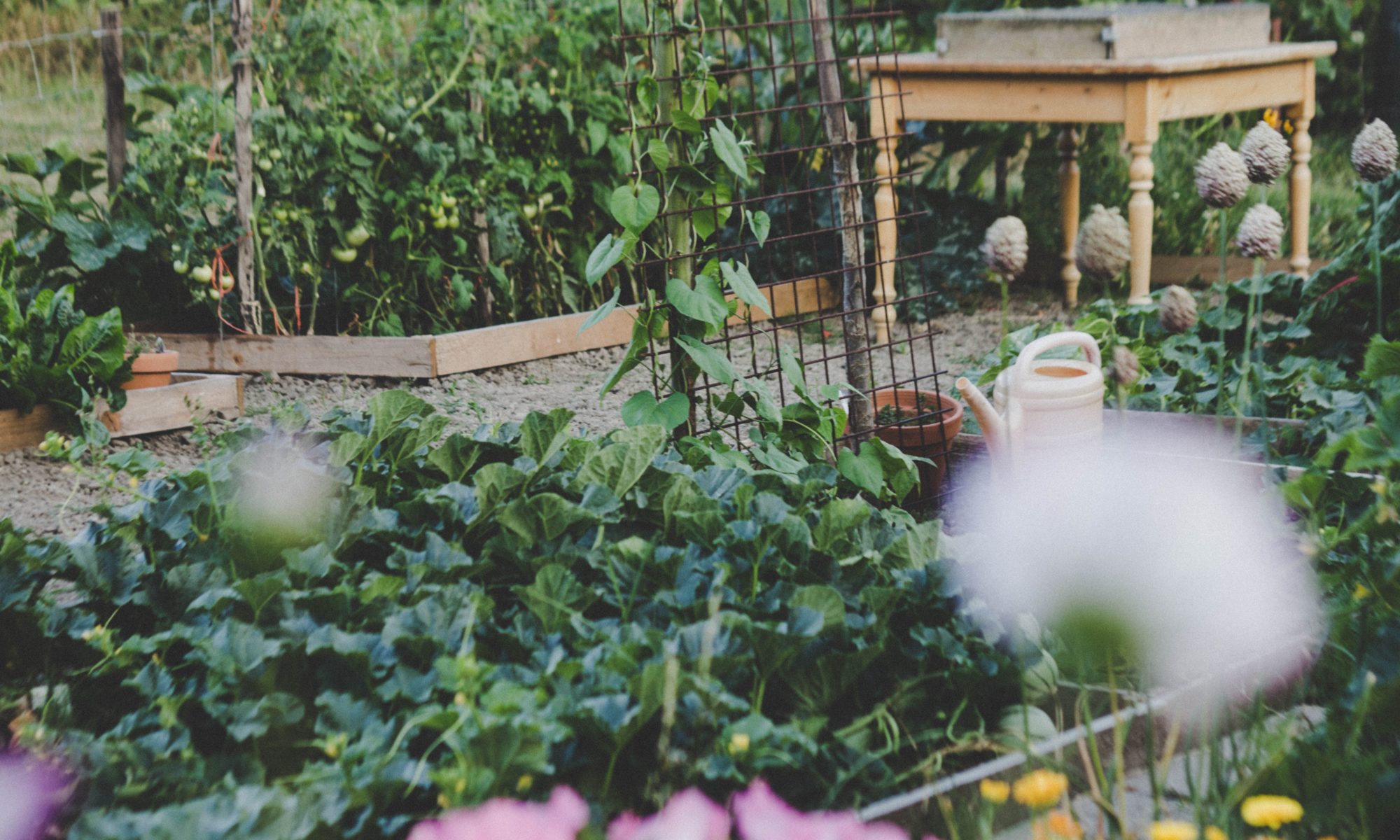This is an updated version of a blog post published in 2019.
When we talk to people around us about what we do at Regeneration Canada, one of the questions we’re asked most often is: Can I make my own garden regenerative? Can the different practices that farmers use to regenerate their soil be applied to a small backyard garden? The answer is yes!
We are proposing 12 ways to make your garden regenerative. But before we get to them, let’s take a moment to reflect on why this matters.
Why do we need to regenerate our soil?
Regeneration means improving the resources you depend on, like soil, by building them and regenerating life into them, as opposed to simply using them and leaving them degraded. Unfortunately, sustaining our resources isn’t enough anymore: if we want to see real change, we need to be regenerating. And yes, soil is very alive. There are more microorganisms in a teaspoon of healthy soil than there are people on the planet!
It’s important to take good care of our soil. Not only does healthy soil allow us to grow healthy, nutrient dense food, it also has the capacity to help reverse climate change. Healthy soil is like a giant carbon sponge. It can store a huge amount of carbon dioxide, by taking it out of the air, and soaking it up in the ground. This can help reverse the effects of global warming and extreme weather.
So how can you make your home garden more regenerative?
1. Cover your soil

Just like other living things, soil needs food and shelter to survive. There are different ways to achieve this in a small garden. You can cover your soil with living plants, called cover crops, which are not necessarily meant to be harvested. For instance, you can plant rye in the fall on the bare ground once you have harvested a garden bed. The rye occupies the space over winter and grows back in early spring. Before you want to plant in the bed, you can cover the rye with a tarp to deprive it from light. Then you can plant your vegetables in the residues of the rye. Other common cover crops used in small scale gardens include oats, buckwheat, clover, and mustard, although many others are possible, including mixes.
Covering your soil with these plants helps store water and retain moisture, and also helps suppress weeds. If you have deep rooted plants, you can also plant low growing ground cover around them such as white clover or thyme. You just don’t want anything which will compete for nutrients in the same root zone as your fruit or vegetables.
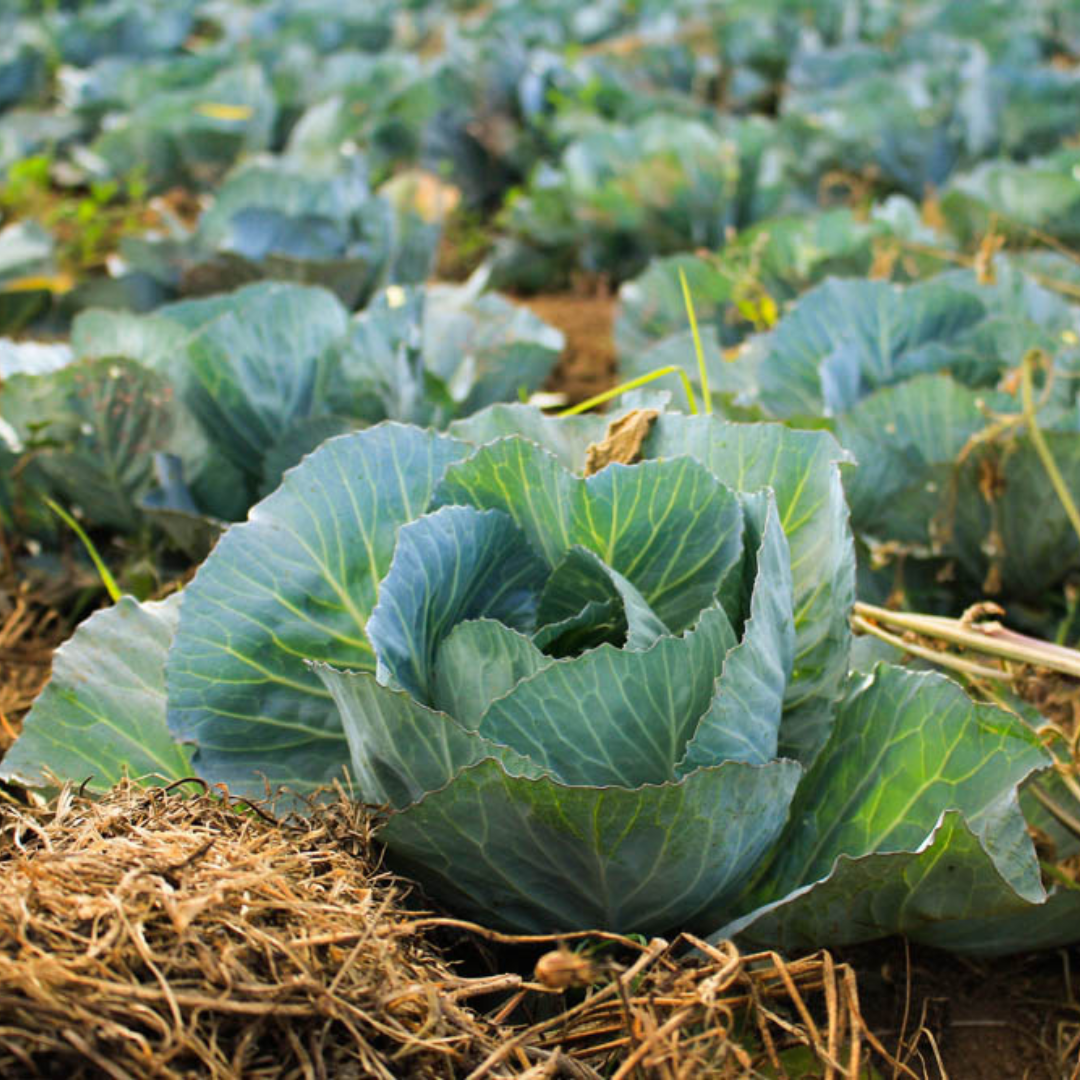
Another option is to cover your soil with mulch, or dried plant matter, like grass clippings, straw, dried leaves or wood chips. We’ve even seen a farmer use shredded cardboard! As long as it will decompose, it will keep adding organic matter and help build more soil in the future.The important thing with mulch is that it stays on the surface of the soil, not mixed into the plant’s root zone. Otherwise it could decompose too quickly and rob nitrogen from your vegetables. Mulch holds water in the soil so effectively that generally you don’t need to water your garden once your plants are established. A real plus on hot summer days!
2. Don’t disturb the soil
Turning over the soil will actually deplete it by breaking its structure and disturbing its ecosystem. It also contributes to releasing all that stored carbon back into the atmosphere. Instead of tilling or turning over your soil, you can just loosen it with a pitchfork or a broadfork. Dig in deep, and move the fork back and forth to decompact the soil. You will easily be able to pull out deep rooted weeds after that. The longer you manage permanent beds without tilling, using compost, mulch and cover crops, the softer and richer your soil will become. It will be very easy to weed and prepare your beds.
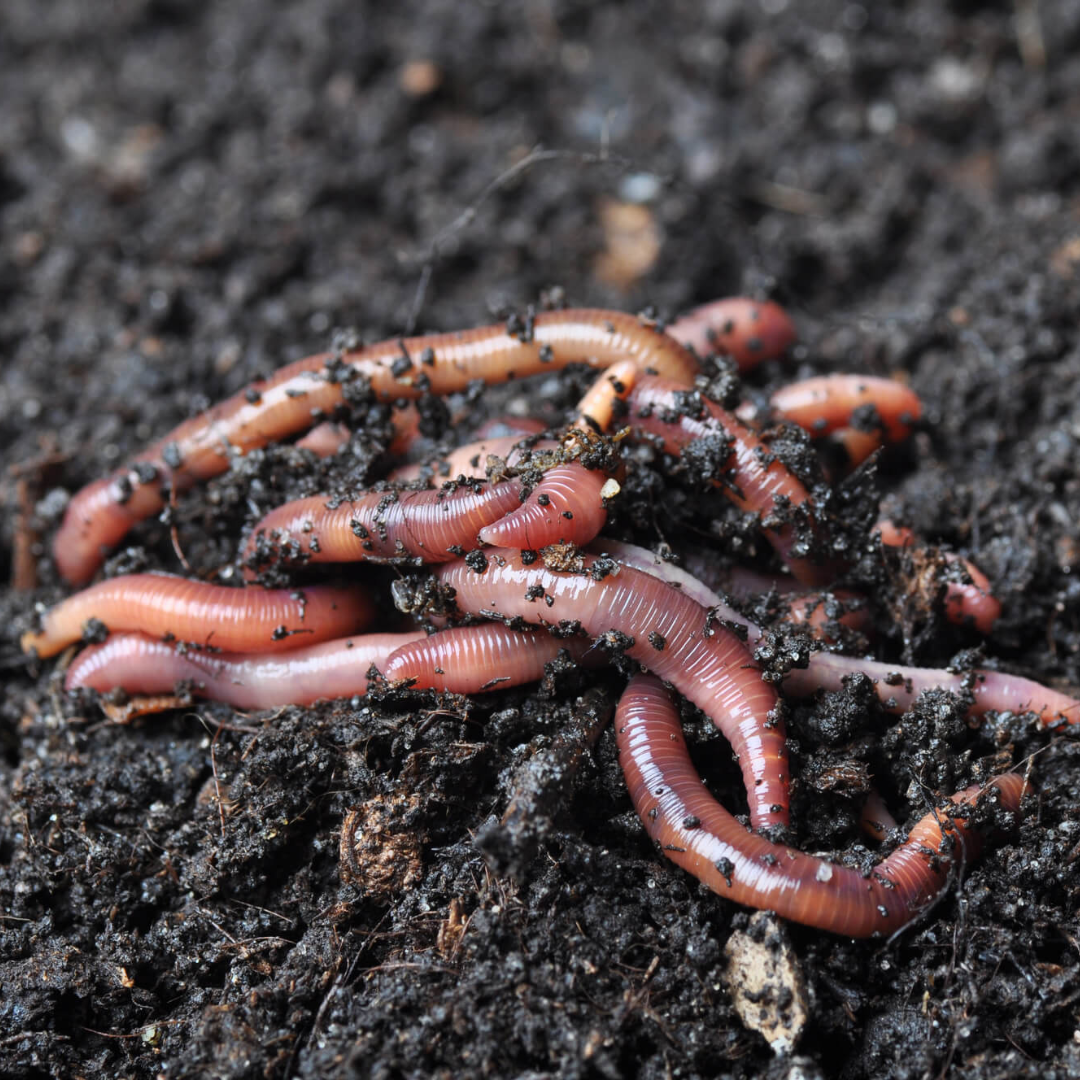
3. Use your own or locally-sourced compost and soil amendments
By composting our food waste and spreading it over our soil, all the nutrients of our food are recycled and used to feed the soil. Compost helps restore your soil and gives a second life to our food scraps! Find out more reasons why compost is so great.
You can make your own compost, for example by vermicomposting with worms, or get some as locally as possible (check with your municipality), or buy good quality organic compost at your local gardening store.
4. Use alternatives to peat
Most commercial potting soil mixes contain peat moss. Peat moss is not a renewable resource. It is like fossil fuel: it took hundreds or thousands of years for peat bogs to form naturally and we are mining them rapidly. Peat bogs sequester huge amounts of carbon, so we don’t want to destroy them. You can make potting mixes using garden soil with compost, rotted leaf mulch and adding something like perlite or vermiculite to make it lighter.
5. Mind water usage
Groundwater is another resource which is not being renewed as quickly as we are drawing it out of the ground. If you can, avoid using well water in your garden. Instead, install a barrel to catch rain and use rainwater to water your garden. If you use plenty of mulch or other groundcovers, your regenerative garden will need less water. With a well-covered garden, you should only need to water when you plant: once your plants are established, their roots should be able to get water from the ground. Your plants should only need watering during a long dry period.
6. Don’t use chemicals!
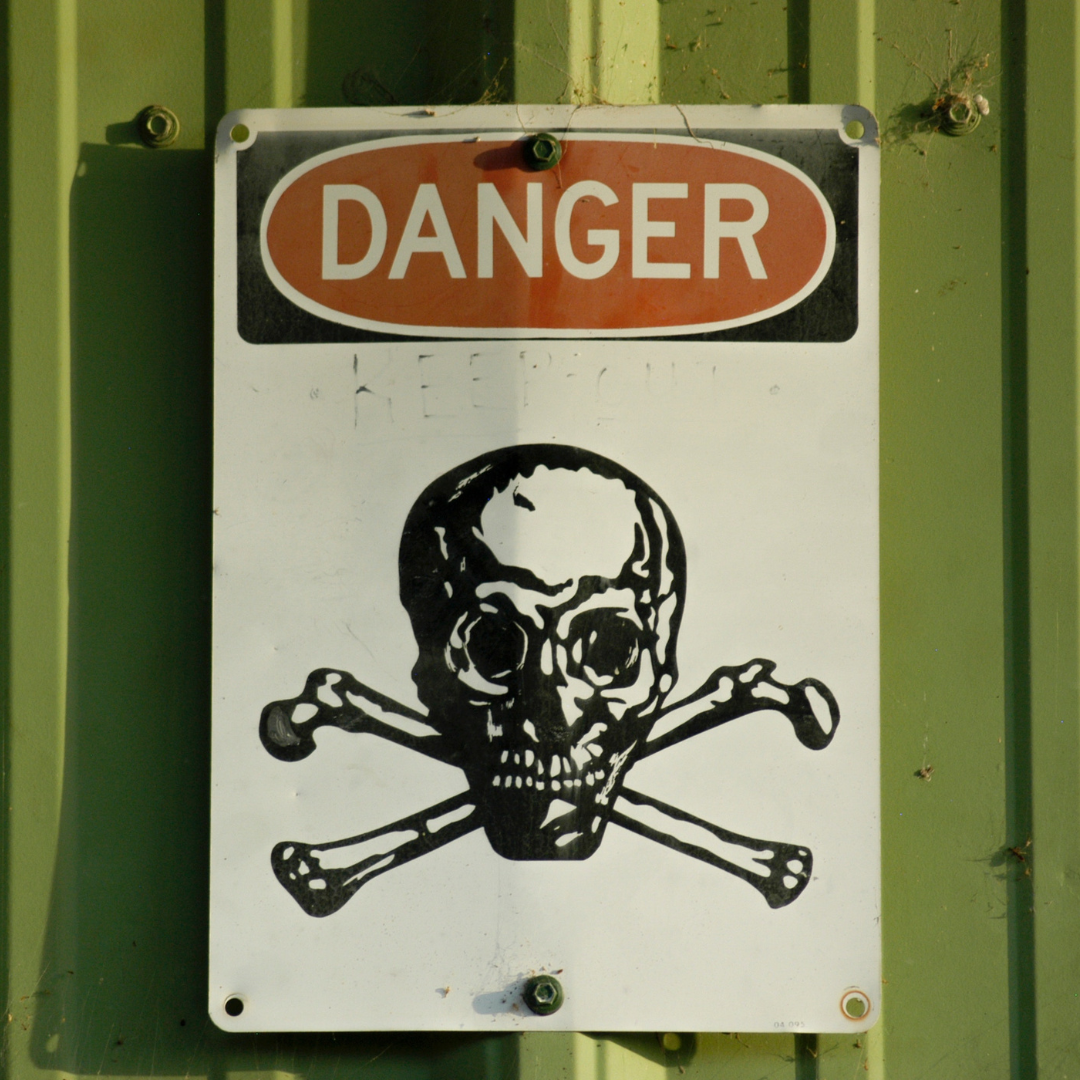
It’s simple: if you don’t want toxic chemicals in your body, then don’t put them in your food. Healthy soils also means healthier food: rebuilding soil organic matter reduces dependence on synthetic fertilizers and pesticides, and results in more nutrient-dense food.
There are other solutions! Using regenerative methods and only organic inputs restores the natural nutrient cycling ability of soil. Your plants will have strong immune systems and get all the nutrients they need without having to use any chemicals.
7. Plant different things
Not only is it more fun to have a variety of fruits, vegetables and flowers in your garden, but planting a diversity of plants helps your garden be more resilient to a range of conditions. Increasing plant diversity also attracts more bird and insect species, boosting above-ground biodiversity, while creating opportunities for a wider variety of soil organisms to thrive below the surface.

8. Grow food
By growing your own fruits, vegetables and other edible plants, you are reducing your carbon footprint by buying less food at the store: your food will spend less energy traveling and so will you. When your food comes from your own backyard, that means fewer food miles. Your fruits and vegetables will also taste much fresher!
9. Plant perennials: plants that stick around year after year
Perennials are plants that will grow back year after year. Not only are they easy to care for, because they just grow back after the winter, but their deep roots capture more carbon and moisture, helping microorganisms thrive and build healthier soil.
Common edible perennials include fruit trees and berry bushes, like currants or blueberries, or lovely fragrant herbs like sage, thyme, rosemary or lavender, or other vegetables like garlic, asparagus and some types of onions. Do some research to find out what perennial species are indigenous to your region. For both food crops and flowers, there are native species which are worth discovering.
10. Create habitat for pollinators and other beneficial insects
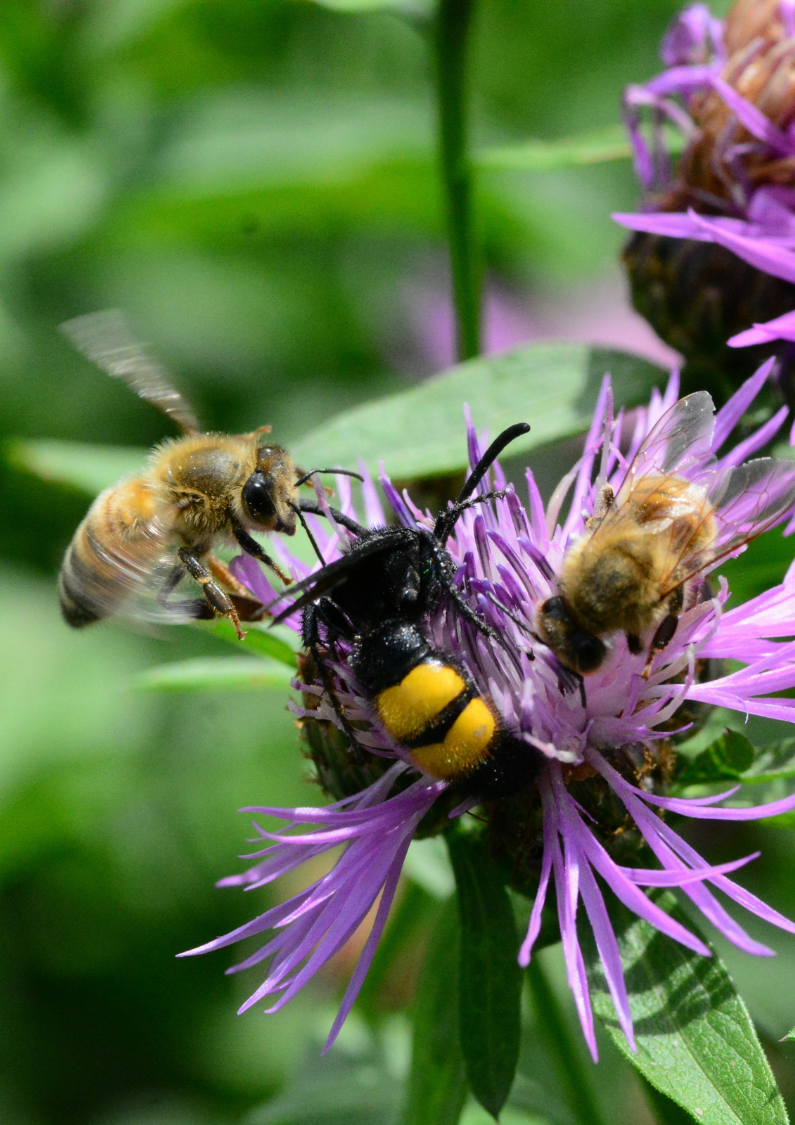
Our food supply depends on pollinators. When we think of pollinators we often think of honey bees, but they are not actually indigenous to North America. There are many wild pollinators which are indigenous – like bees, butterflies, hummingbirds, moths, and even beetles – but all of them are endangered due to loss of their natural habitat as well as exposure to toxic chemicals used so endemically. We can help them out by providing habitat for them. Many species are very specialized in what habitat they need to eat and to breed. Allowing a diversity of wild indigenous plants to proliferate around your yard and garden and researching more about wild pollinators and their needs are good steps to take.
There are many other beneficial insects as well which have an important role to play in ecosystem health. Wild predators such as ladybugs and wasps are great because they control the pests which might devour your fruit and vegetables, helping you out if you don’t want to use pesticides.
11. Save seeds!

Seeds evolve and adapt genetically to their environment. This means that seeds collected from plants which have grown in your region will be better adapted to your conditions than seeds you might buy from somewhere far away with very different conditions. In order to save seeds, you need to have heritage seed varieties to begin with, because hybrid seeds will not grow true to type. Heritage seeds have been grown and selected for more than seven generations and their offspring will resemble the plant you collected the seed from. You also need to make sure your plant did not grow too closely to another variety it may have crossed with. For the beginner, the easiest seeds to begin with are beans. Let your beans ripen fully on the vine or even dry there if it is not too damp. Gather them dry and remove the pods to save your dried beans to replant the next season.
12. Choose locally-adapted seeds from local seed producers
For the reasons mentioned above, it is not always simple to save your own seed. Each plant requires something a bit different, so seed saving is a specialized profession. If you are interested in learning how to successfully save seeds, it is well worth your time. But otherwise, you can buy your seed from a professional local seed saver and get the benefits of having locally adapted, high quality seeds.
If you want to spread the love, share these tips with your friends – and please don’t judge others or preach! That’s part of the regenerative spirit. 🙂
Now you can call yourself a regenerative gardener!
To find out more tips on how to regenerate soil, sign up to our newsletter or join as a member!
– JOIN THE MOVEMENT –

